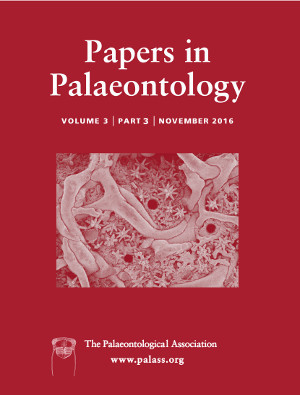Reg. Charity No. 1168330

Ordovician (Darriwilian to Sandbian) micromorphic linguliform lingulate brachiopods are described from the Guniutan Formation at the Fenxiang section in Hubei province, and the Maocaopu and Cili sections in Hunan province of south‐central China, situated on the Yangtze Platform. A total of 7560 specimens from 155 limestone samples (within the interval of Lenodus variabilis – Pygodus anserinus biozones) are assigned to 22 species, representing a low taxonomic diversity and low abundance fauna. The fauna is dominated by the Acrotretoidea, mainly species of the Torynelasmatidae, with Torynelasma the most abundant (more than 40% of total number of specimens), along with the Eoconulidae and Eoconulus (18% of total) representing the second most common forms. Species of the Ephippelasmatidae are also common (16% of total) diverse, and include representatives of Myotreta and Numericoma, as well as Ephippelasma, whereas species of the Scaphelasmatidae are somewhat less common (13% of total). All three investigated sections represent outer shelf environments, but the Maocaopu section is situated in a relatively deeper position, in proximity of the south‐eastern outer margin of the Upper Yangtze Platform, close to its boundary with the Jiangnan Slope. A quantitative analysis of the relative abundance data was carried out in order to investigate the biofacies distribution of the micromorphic brachiopod communities across the Yangtze Platform, something that has not been attempted before with Palaeozoic linguliforms. Six lingulate microbrachiopod communities could be recognized in the sections. The major biofacies shift, which occurred in the Cili section in the upper part of the Microzarkodina ozarkodella Zone, at the time of the onset and initial rise of the Mid Darriwilian Carbon Isotope Excursion (MDICE) suggests that these biofacies may have been depth controlled.